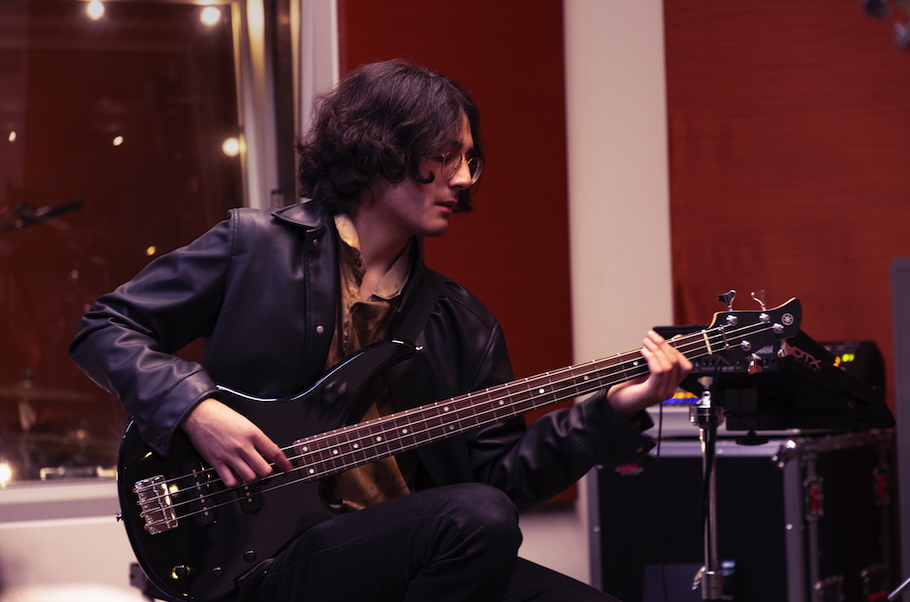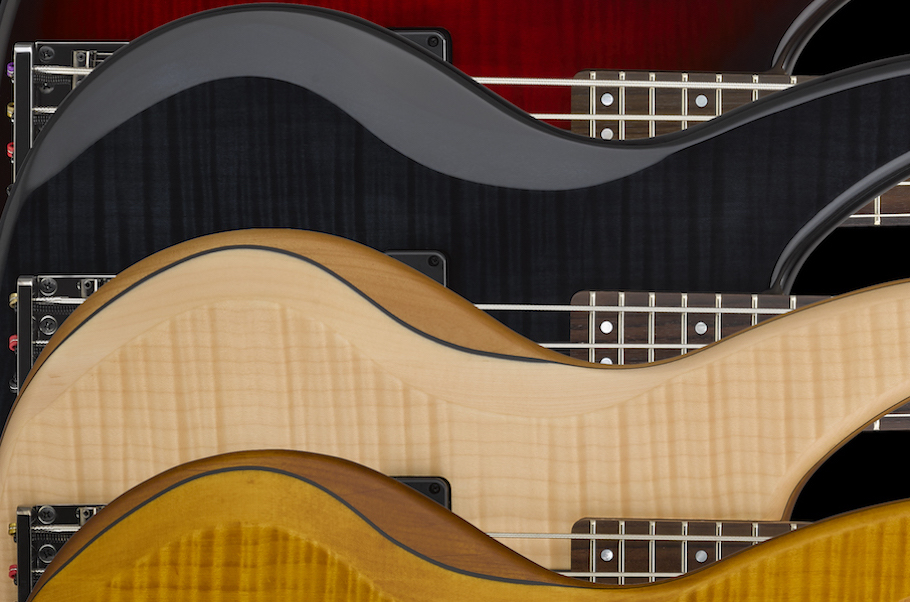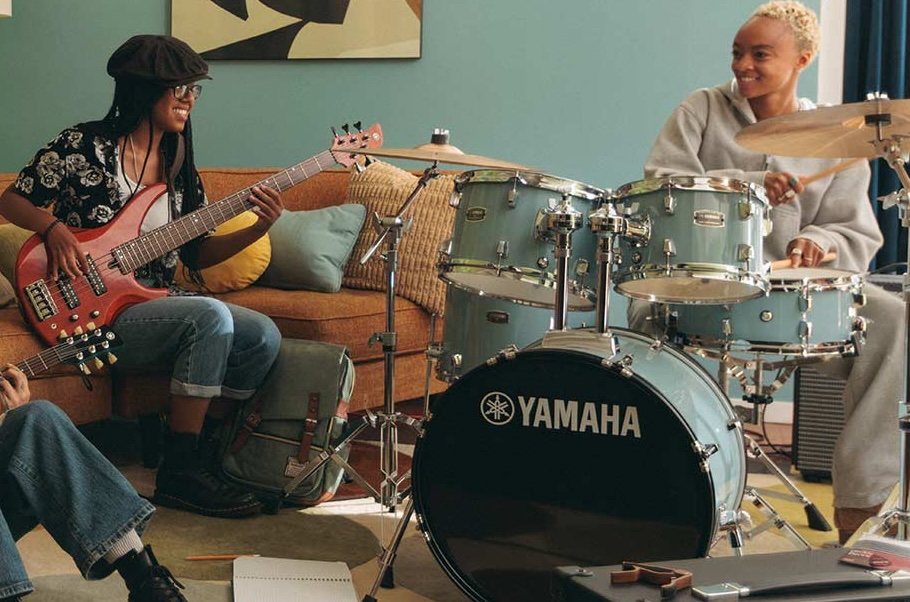How to Play Shuffles on Bass
Tips and techniques to help you master this essential groove.
Consider for a moment the one element that unites Stevie Wonder’s “Isn’t She Lovely,” Steely Dan’s “Reelin’ in the Years,” Queens of the Stone Age’s “Keep Your Eyes Peeled” and Michael Jackson’s “The Way You Make Me Feel.” What does every song on this disparate list have in common? The almighty shuffle.
Learning to play shuffles is a fundamental skill for any drummer, which makes it indispensable for bass players too. In this posting, we’ll show you how to get into the shuffle groove.
SHUFFLE VARIETIES
There are many different varieties of shuffles, but they’re all rooted in the blues and are all triplet-based. Shuffles can be identified by feel (i.e., the “half-time shuffle,” which places the snare on beats 2 and 4), associated with a drummer (such as the “Gadd shuffle,” named after famed Yamaha Artist Steve Gadd), tied to a region (the “Texas shuffle”), named by genre (the “jazz shuffle”), or even by its association with a record label (the “Motown shuffle”). Here are some of the most popular shuffles and the dynamic duos who helped make them famous.
THE 12/8 SHUFFLE
The slow pulse of legendary bluesman Muddy Waters’ “Mannish Boy” is (arguably) in 12/8 time, but the weight of the quarter notes makes it easy to feel as if it’s 4/4, with implied triplets coming from the drums. Notice how bassist Charles Calmese only plays on the song’s signature riff, leaving plenty of space for drummer Willie Smith to lay down the groove.
The big, bad feel of “Mannish Boy” is the foundation for many tunes, including George Thorogood’s “Bad to the Bone,” though here, bass player Billy Blough hugs drummer Jeff Simon’s kick drum and doubles the main riff. This 12/8 shuffle also underpins songs like Tears for Fears’ “Everybody Wants to Rule the World,” which perfectly syncs Curt Smith’s synth bass line with Manny Elias’s drum part.
THE PURDIE SHUFFLE
With its syncopated ghost notes on the snare, Bernard Purdie’s signature shuffle has inspired countless variations. Chuck Rainey’s bass parts have accompanied the Purdie shuffle as far back as 1970, when the two musicians played on Aretha Franklin’s “Heavenly Father.” Perhaps the best-known examples of Purdie-Rainey synergy are Steely Dan’s “Home At Last” and “Babylon Sisters,” both of which benefit from interactive bass parts that support the band’s jazzy harmony while accentuating each song’s reggae-ish lilt. (Be sure to check out this minus-vocal clip of “Home at Last,” which allows you to hear all the instrumental parts especially clearly.)
THE BONHAM BEAT
On Led Zeppelin’s “Fool in the Rain,” bass man John Paul Jones leaves lots of room for this prototypical example of drummer John Bonham’s trademark shuffle. Even when Jones leaves his main C major part for a Latin-flavored break, he’s still right in time with Bonham’s rock-solid shuffle; the samba-ish section halfway through the song gives them both a chance to jam, and Jones stretches out, right up until they return to the half-time shuffle. Although he introduces new touches and revisits the Latin flavor in the last minute of the track, Jones never loses his connection to Bonham’s thunderous groove. (Check out this isolated bass/drum clip.)
THE “ROSANNA” SHUFFLE
Drummer Jeff Porcaro said his approach on Toto’s “Rosanna” was a combo of the Purdie shuffle, the Bonham beat and the Bo Diddley beat. As you can hear in this isolated rhythm section track, Toto’s then-bassist David Hungate, a studio veteran, pairs the complexity of Porcaro’s part with a straightforward bassline that hugs the kick on hits, matches the drummer’s dynamics and livens things up with a slap bass part. As the song reaches its conclusion, Hungate mirrors the kick for maximum effect. “Rosanna” is a masterclass in dynamics, simplicity and a rhythm section working closely together.
THE TEXAS SHUFFLE
Double Trouble, the magical combo of bassist Tommy Shannon and drummer Chris Layton, is best known for supporting Stevie Ray Vaughan. A shining example of the Texas shuffle can be found in Vaughan’s “Pride and Joy,” where Shannon’s bassline bounces right along with Layton’s precisely sloppy feel. The kick, snare, ride and bass part are tied so tightly together that hearing the isolated bass track is a revelation.
THE GADD SHUFFLE
The smoothly swinging jazz shuffle most associated with drummer Steve Gadd — a backbeat and ghost notes on the snare coupled with a steady bass drum (sometimes four on the floor), along with signature hi-hat and ride moves — is an invitation to play strong quarter notes and walking basslines with tasteful ornamentations. In this video, Gadd demonstrates several shuffles, one played with fellow studio legend Will Lee on bass (and harmonica). And on David Grusin’s “Shuffle City,” Gadd and bassist Anthony Jackson balance iron-clad time with ultra-creative improvisation.
SHUFFLE SUCCESS
When it comes to shuffles, repetition and simplicity are powerful tools. As demonstrated in the audio clips below (all played on a Yamaha BB435 bass), try different note lengths: If the drummer is playing the ride cymbal, long bass notes can match the cymbal’s sustain, while short notes can accentuate a chunky hi-hat/snare/kick groove.
Playing quarter-note walking basslines like these can allow you to “float” over a shuffle, while matching the kick keeps things grounded, as demonstrated in these audio clips:
You can also learn how other bassists handle shuffles in genres outside blues and jazz by listening to playlists like this one, which provides a fascinating overview of half-time and four-on-the-floor shuffles in pop music. And don’t forget to search YouTube for examples of grooves (like the ones demonstrated in this video), isolated tracks, instrumental versions and bass-less versions of songs that catch your ear. They’re all great approaches to mastering the art of shuffling on bass.














